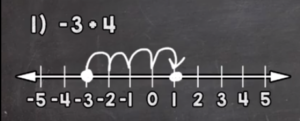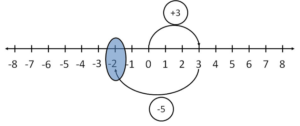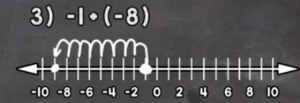This page will help you understand how the addition of integers is performed using a number line. What are the rules and steps that are to be followed while performing the addition of integers on the number line along with few examples. Solved Examples on Addition of Integers on a Number Line will make it easy for you to understand the problem-solving approach used and then apply it to similar problems you face later on.
Do Read: Representation of Integers on a Number Line
How to Add Integers on a Number Line? | Steps for Adding Integers Using a Number Line
For adding any two integers on a number we have to follow a step-by-step process as following.
- Initially, we need to draw the number and mark integers accordingly.
- As we have two numbers, first we have to represent the first number on the number line.
- Then we have to move as many units as the second number given, move towards the right if the second number is positive, and move towards the left the second number is negative.
- After making the required moves with both numbers we will reach our answer.
Rules for Adding Integers on a Number Line
Below are two important that you should always remember when performing addition on a number line.
- Whenever we are adding a positive integer we move to the right side of the number line because we are increasing in value.
- Whenever we are adding a negative integer we move to the left side of the number line because we are decreasing in value.
Let’s jump into our examples with all possible combinations for better understanding.
Addition of Integers on a Number Line Examples
Example 1:
-3 + 4
Solution:
So we have to start at a negative 3, then we have to add a positive 4.
That means we are increasing in the value, So we are going to move to the right.
As shown in the below image. We stared at -3 and then we are adding a 4 by moving four times towards the right.
So we ended up on positive 1.
-3 + 4 =1
Example 2:
(3) + (-5)
Solution:
In this example, we have a positive 3 and a negative 5. Here we have to start at a positive 3 and then we have to add a negative 5, So here we are decreasing in value. This means we will move to the left side on the number line.
As shown in the below image. We have to start at a positive 3, then move 5 times towards the left side because we are adding a negative 5.
By doing so we ended upon -2.

Example 3:
(-1) + (-8)
Solution:
Here we have a negative 1 and a negative 8. We have two negative numbers, which means we are adding one negative number with another negative number. So we decreasing the value, Which means we will be moving towards the left on the number line.
As shown in the below image. We have to start at a negative 1, then move 8 times towards the left side because we are adding a negative 8.
By doing so we ended up on a negative 9.
Answer: (-1) + (-8) = -9.
Example 4:
6 + 3
Solution:
Here we have a positive 6 and a positive 3. We have two positive numbers. which means we increasing the value, So we will be moving towards the right on the number line.
As shown in the below image. We have to start at a positive 6, then move 3 times towards the right side because we are adding a positive 3.
By doing so we ended up on a positive 9.
![]()
6 + 3 =9.
FAQs on Addition of Integers on a Number Line
1. What is the formula for adding integers?
Whenever we are performing addition if two integers are having the same sign add them. if two integers are having different signs subtract them.
2. Can we perform subtraction on integers using the number line?
Yes, we can perform subtraction of integers using a number line.
3. What is an integer?
Any whole number is called an integer. Integers can be positive numbers or negative numbers.
4. How do integers work?
Integers are whole numbers with positive and negative values. We can perform mathematical operations like addition, subtraction, multiplication, and division on integers.
